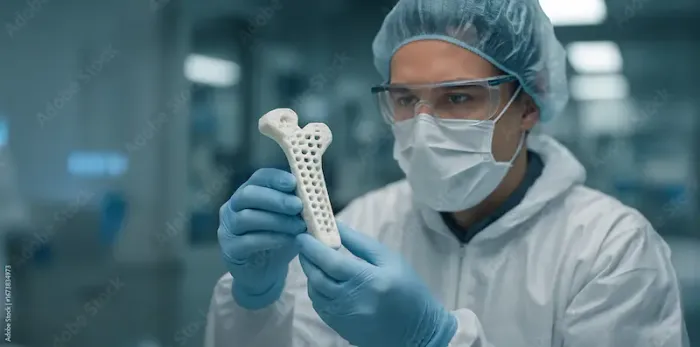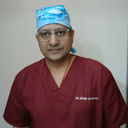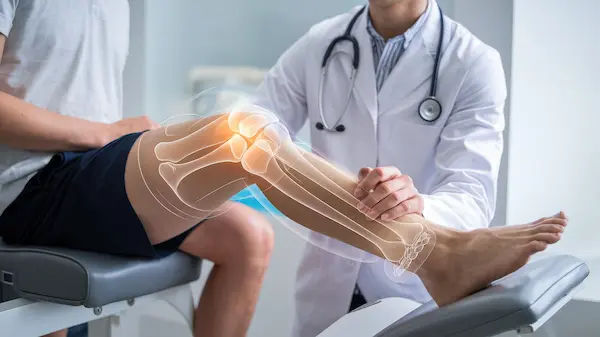The Future is Now A Guide to Groundbreaking Innovations in Orthopaedic Surgery
Discover the latest innovations in orthopaedic surgery, including robotics, 3D printing, biologics, AI, and minimally invasive techniques that are transforming patient recovery.

Written by Dr. Md Yusuf Shareef
Reviewed by Dr. D Bhanu Prakash MBBS, AFIH, Advanced certificate in critical care medicine, Fellowship in critical care medicine
Last updated on 30th Sep, 2025

Introduction
For decades, the thought of orthopaedic surgery—whether for a worn-out knee, a torn ligament, or chronic back pain—often conjured images of large incisions, lengthy hospital stays, and a long, painful recovery. Today, that picture is changing dramatically. The field of orthopaedics is in the midst of a technological renaissance, driven by innovations that are making surgeries less invasive, more precise, and remarkably effective. This guide will walk you through the most exciting innovations in orthopaedic surgery, from robots in the operating room to biologics that harness your body’s innate healing power. We will explore how 3D printing is creating custom-fit joints, how artificial intelligence is aiding surgeons in planning complex procedures, and how new recovery protocols are getting patients back on their feet faster than ever before. If you or a loved one are considering treatment for a bone or joint condition, understanding these advancements can empower you to have more informed discussions with your healthcare provider about the best possible path forward.
The Robotic Revolution: Precision and Predictability in the OR
One of the most talked-about innovations in orthopaedic surgery is the integration of robotic systems. Think of these not as robots performing autonomous surgery, but as sophisticated tools that enhance a surgeon’s skill and precision.
How Robotic-Arm Assistance Works
Before the procedure, a 3D virtual model of the patient’s joint (like a knee or hip) is created from a CT scan. The surgeon uses this model to pre-plan the exact size, placement, and alignment of the implant with incredible detail. During surgery, the robotic arm provides tactile, visual, and auditory feedback to the surgeon, helping them stay within the pre-defined surgical plan. This ensures that only the damaged bone is removed, and healthy bone and tissue are preserved.
Benefits for Common Procedures: Knee and Hip Replacements
For procedures like a robotic knee replacement surgery, this precision translates to tangible benefits. Studies have shown that robotic assistance can lead to more accurate implant positioning compared to traditional methods. This accuracy is crucial for the longevity of the implant and the natural feel of the joint post-surgery. Patients often experience less pain, a quicker recovery, and improved range of motion. It’s a prime example of how technology is making a major difference in patient outcomes.
Minimally Invasive Surgery (MIS): Smaller Incisions, Faster Recovery
The principle behind Minimally Invasive Surgery (MIS) is simple: achieve the surgical goal with the least amount of disruption to the body. This is achieved through smaller incisions, specialised instruments, and advanced imaging techniques.
Arthroscopy: Seeing and Repairing from Within
Arthroscopy is a common form of MIS used for joints like the shoulder, knee, and wrist. A surgeon inserts a tiny camera (an arthroscope) through a small incision, projecting a high-definition view of the joint onto a monitor. Through other small incisions, miniature surgical instruments are used to repair torn rotator cuffs, reconstruct ACL ligaments, or smooth damaged cartilage. The benefits of this approach include less tissue damage, reduced scarring, and often, the ability to perform the surgery as an outpatient procedure.
Endoscopic Spine Surgery: An Alternative to Open Back Surgery
Similar principles are now being applied to the spine. Endoscopic spine surgery allows surgeons to address issues like herniated discs or spinal stenosis through incisions often less than an inch long. An endoscope is guided to the precise problem area, minimising muscle stripping and bone removal required in traditional open back surgery. This can lead to a significantly faster recovery and reduced post-operative pain, making it a valuable option for eligible patients seeking the latest technology for joint pain related to spinal conditions.
The Power of 3D Printing: Customised Implants and Surgical Guides
3D printing, or additive manufacturing, is revolutionising orthopaedics by moving away from "one-size-fits-most" implants to truly personalised solutions.
Patient-Specific Instruments (PSIs) for Perfect Alignment
Surgeons can now use 3D printing to create custom surgical guides. Based on a patient’s unique anatomy from a CT or MRI scan, a guide is printed that fits perfectly onto the bone during surgery. This guide shows the surgeon exactly where to make cuts or place implants, ensuring the plan is executed with high accuracy. This technology is particularly beneficial for complex revision surgeries or patients with unusual anatomy.
Porous Metal Implants that Encourage Bone Growth
Beyond guides, the implants themselves can be 3D printed. 3D printed hip implant technology allows for the creation of porous metal structures that mimic the density and texture of natural bone. This porosity encourages the patient’s own bone to grow into the implant, creating a stronger, more biological bond known as osseointegration. This can enhance the stability and longevity of the implant, potentially reducing the risk of loosening over time.
Biologics: Harnessing the Body’s Own Power to Heal
Biologics represent a shift from replacing damaged tissue to stimulating the body to repair itself. These treatments use substances naturally found in the body to accelerate healing.
Platelet-Rich Plasma (PRP) Therapy for Soft Tissue Injuries
PRP injection for rotator cuff tear or chronic tendonitis is a popular biologic treatment. A small sample of the patient’s blood is spun in a centrifuge to concentrate the platelets, which are rich in growth factors. This concentrate is then injected directly into the injured area under ultrasound guidance. The growth factors are thought to stimulate and enhance the body’s natural healing processes, reducing pain and inflammation. While research is ongoing, PRP shows promise for treating various soft tissue conditions.
Stem Cell Therapy: Potential for Cartilage Regeneration
Stem cell therapy for arthritis is an area of intense research. Stem cells, often harvested from the patient’s own bone marrow or fat tissue, have the potential to develop into different types of cells, including cartilage cells (chondrocytes). When injected into a joint affected by arthritis, the goal is to reduce inflammation and potentially promote the regeneration of damaged cartilage. It’s important to note that this is still largely considered an investigational treatment, but it holds significant potential for the future of cartilage repair.
Consult a Orthopaedic Surgeon for the best advice
Artificial Intelligence (AI) and Data Analytics: Smarter Surgical Planning
AI is beginning to play a role in surgical planning by analysing vast datasets of medical images and patient outcomes. AI algorithms can help surgeons predict the optimal implant size and position based on thousands of similar past cases. They can also analyse pre-operative data to identify patients at higher risk for complications, allowing for proactive measures. This data-driven approach helps create highly personalised surgical plans, moving towards predictive and preventive orthopaedics.
The "Smart" Joint and Remote Rehabilitation
The innovation doesn’t stop in the operating room. Sensor-embedded implants can transmit data on range of motion, step count, and walking patterns to a patient’s smartphone and their surgeon. This real-time data allows for remote monitoring of recovery progress. Coupled with tele-rehabilitation, where patients follow guided physical therapy sessions via video conferencing, this creates a continuous care ecosystem. It ensures patients are recovering correctly from home and allows clinicians to intervene early if problems arise.
Are These Advanced Procedures Right for You?
While these innovations in orthopaedic surgery are exciting, they are tools, not magic bullets. The best treatment option always depends on the individual patient’s condition, anatomy, overall health, and lifestyle. A thorough evaluation by an orthopaedic specialist is essential. If you are experiencing persistent joint pain or have been diagnosed with a condition that may require surgery, consulting an orthopaedic surgeon, for instance via an online consultation with Apollo24|7, can help you understand if you are a candidate for these advanced techniques. They can explain the potential benefits, risks, and expected recovery time for robotic arm surgery or other procedures in the context of your specific situation.
Conclusion: A More Confident Path to Recovery
The landscape of orthopaedic care is evolving at an unprecedented pace. The convergence of robotics, advanced imaging, 3D printing, and biologics is creating a new standard of care that is less invasive, more personalised, and more effective than ever before. These innovations in orthopaedic surgery are fundamentally shifting the patient experience from one of apprehension to one of confidence. The focus is now on preserving healthy tissue, achieving optimal outcomes, and enabling a swift return to an active life. If you are facing an orthopaedic procedure, take heart in knowing that the technology available today offers a path to recovery that is smarter, smoother, and more tailored to you. The future of orthopaedics is not just about fixing what’s broken; it’s about restoring function with unparalleled precision and care.Consult a Orthopaedic Surgeon for the best advice
Consult a Orthopaedic Surgeon for the best advice

Dr. Binay Agarwal
General and Laparoscopic Surgeon
15 Years • MBBS, MS General Surgery
North Dumdum
Dum Dum Medical Centre, North Dumdum
Dr. Deepak G
General Surgeon
2 Years • MBBS, MS
Bengaluru
A.V.S Clinic, Bengaluru

Dr. Deepak Thakur
General Surgeon
10 Years • MBBS, MS General Surgery
Patna
Health Care Clinic, Patna
Dr. Siva Prasad Arja
General Surgeon
4 Years • MBBS, DNB (GENERAL SURGERY)
Hyderabad
Seasons hospital, Hyderabad

Dr. Balachandar Kariappa Reddy
General Surgeon
16 Years • MBBS, DNB (Gen. Surg.), FMAS.,FAIS
Chennai
Apollo Hospitals Greams Road, Chennai
(75+ Patients)
Consult a Orthopaedic Surgeon for the best advice

Dr. Binay Agarwal
General and Laparoscopic Surgeon
15 Years • MBBS, MS General Surgery
North Dumdum
Dum Dum Medical Centre, North Dumdum
Dr. Deepak G
General Surgeon
2 Years • MBBS, MS
Bengaluru
A.V.S Clinic, Bengaluru

Dr. Deepak Thakur
General Surgeon
10 Years • MBBS, MS General Surgery
Patna
Health Care Clinic, Patna
Dr. Siva Prasad Arja
General Surgeon
4 Years • MBBS, DNB (GENERAL SURGERY)
Hyderabad
Seasons hospital, Hyderabad

Dr. Balachandar Kariappa Reddy
General Surgeon
16 Years • MBBS, DNB (Gen. Surg.), FMAS.,FAIS
Chennai
Apollo Hospitals Greams Road, Chennai
(75+ Patients)
More articles from Orthopedic Consultation
Frequently Asked Questions
1. What is the main advantage of robotic orthopaedic surgery?
The primary advantage is enhanced precision. Robotic systems help surgeons execute a pre-operative plan with extreme accuracy, leading to better implant alignment, less soft tissue damage, and potentially a quicker, less painful recovery.
2. Are biologic treatments like stem cell therapy a proven alternative to surgery?
Currently, biologics are generally not considered a proven alternative to surgery for major structural issues like advanced arthritis. They are often used to manage symptoms and potentially delay the need for surgery. Their role is still being defined through clinical research. It's crucial to discuss the evidence for your specific condition with your doctor.
3. Is 3D printing used for all joint replacement surgeries?
No, it is not yet standard for every surgery. It is particularly valuable for complex cases, revision surgeries, or patients with unique anatomies where off-the-shelf implants may not fit perfectly. Its use is growing as the technology becomes more accessible.
4. How does minimally invasive spine surgery differ from traditional surgery?
Traditional 'open' spine surgery often requires a large incision and significant muscle dissection to access the spine. Minimally invasive techniques use smaller incisions and specialised tools to access the problem area with minimal disruption to surrounding muscles and tissues, which typically results in less blood loss and a faster recovery.
5. Will my recovery be much faster with these new technologies?
While these technologies are designed to facilitate a faster recovery, individual results vary. Factors like your overall health, the specific procedure, and your adherence to post-operative physical therapy play significant roles. However, techniques like MIS and robotic-assisted surgery have been shown to reduce average recovery times compared to traditional methods.

